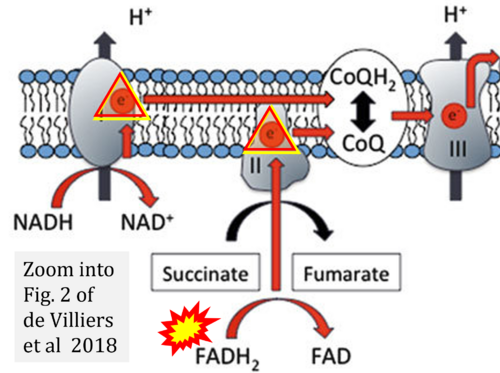De Villiers 2018 Adv Exp Med Biol
| de Villiers D, Potgieter M, Ambele MA, Adam L, Durandt C, Pepper MS (2018) The role of reactive oxygen species in adipogenic differentiation. Adv Exp Med Biol 1083:125-144. doi: 10.1007/5584_2017_119 |
de Villiers D, Potgieter M, Ambele MA, Adam L, Durandt C, Pepper MS (2018) Adv Exp Med Biol
Abstract: Interest in reactive oxygen species and adipocyte differentiation/adipose tissue function is steadily increasing. This is due in part to a search for alternative avenues for combating obesity, which results from the excess accumulation of adipose tissue. Obesity is a major risk factor for complex disorders such as cancer, type 2 diabetes, and cardiovascular diseases. The ability of mesenchymal stromal/stem cells (MSCs) to differentiate into adipocytes is often used as a model for studying adipogenesis in vitro. A key focus is the effect of both intra- and extracellular reactive oxygen species (ROS) on adipogenesis. The consensus from the majority of studies is that ROS, irrespective of the source, promote adipogenesis.The effect of ROS on adipogenesis is suppressed by antioxidants or ROS scavengers. Reactive oxygen species are generated during the process of adipocyte differentiation as well as by other cell metabolic processes. Despite many studies in this field, it is still not possible to state with certainty whether ROS measured during adipocyte differentiation are a cause or consequence of this process. In addition, it is still unclear what the exact sources are of the ROS that initiate and/or drive adipogenic differentiation in MSCs in vivo. This review provides an overview of our understanding of the role of ROS in adipocyte differentiation as well as how certain ROS scavengers and antioxidants might affect this process.
Labels:
Stress:Oxidative stress;RONS
Tissue;cell: Fat
Pathway: S
Correction: FADH2 and Complex II
- FADH2 is shown as the substrate feeding electrons into Complex II (CII). This is wrong and requires correction - for details see Gnaiger (2024).
- Gnaiger E (2024) Complex II ambiguities ― FADH2 in the electron transfer system. J Biol Chem 300:105470. https://doi.org/10.1016/j.jbc.2023.105470 - »Bioblast link«


